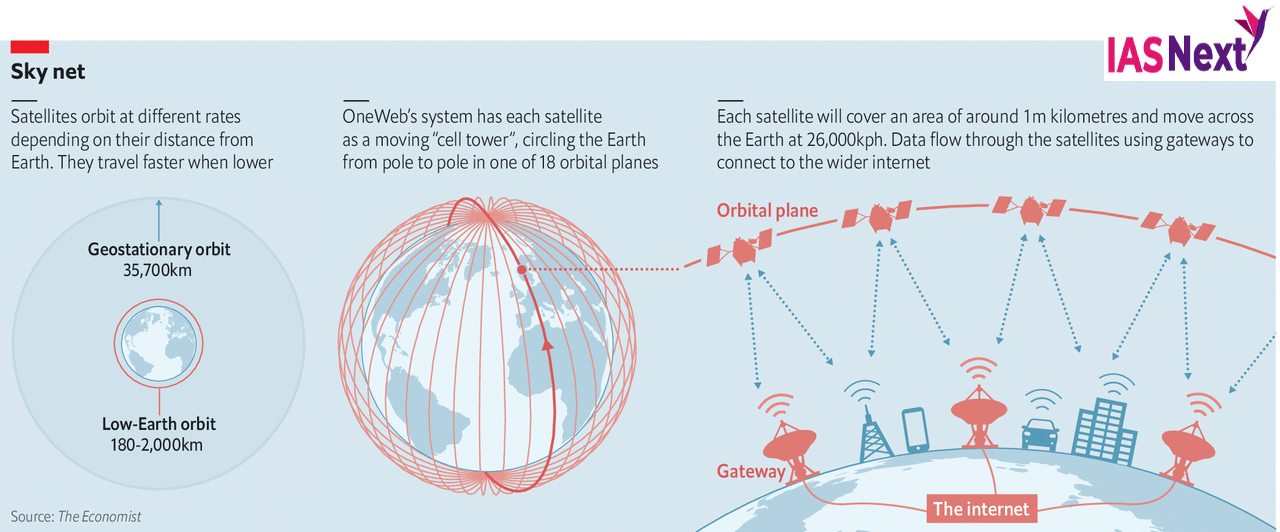CURRENT AFFAIRS
Get the most updated and recent current affair content on Padhaikaro.com
Internet through LEO satellites
- IAS NEXT, Lucknow
- 01, Dec 2021

Reference News:
OneWeb is considering options to remove one of its broadband satellites from low Earth orbit after it failed following a software issue last year.
- So far, OneWeb has deployed 358 satellites at 1,200 kilometers through 11 launches.
Background:
OneWeb has a partnership formed earlier this year with debris-removal startup Astroscale under ESA’s Sunrise program.
About OneWeb’s LEO internet programme:
OneWeb is a Low Earth Orbit (LEO) satellite communications operator.
- Using LEO satellites OneWeb seeks to offer connectivity across the UK, Alaska, Northern Europe, Greenland, the Arctic Seas and Canada. The company expects the service to be switched on before the end of the year.
- It calls this programme the ‘Five to 50’ service of offering internet connectivity to all regions north of 50 degrees latitude.
What are the benefits of LEO satellites based internet?
- LEO satellites are positioned around 500km-2000km from earth, compared to stationary orbit satellites which are approximately 36,000km away.
- As LEO satellites orbit closer to the earth, they are able to provide stronger signals and faster speeds than traditional fixed-satellite systems.
- Because signals travel faster through space than through fibre-optic cables, they also have the potential to rival if not exceed existing ground-based networks.
Challenges:
LEO satellites travel at a speed of 27,000 kph and complete a full circuit of the planet in 90-120 minutes. As a result, individual satellites can only make direct contact with a land transmitter for a short period of time thus requiring massive LEO satellite fleets and consequently, a significant capital investment.
Criticisms of LEO satellites:
- The balance of power has shifted from countries to companies since most of these are private companies run projects. As a result, there are questions related to who regulates these companies, especially given the myriad of nations that contribute to individual projects.
- Complicated regulatory framework:
- Stakeholders in these companies are from various countries. Thus it becomes challenging to receive requisite licences to operate in each country.
- Satellites can sometimes be seen in the night skies which creates difficulties for astronomers as the satellites reflect sunlight to earth, leaving streaks across images.
- Satellites travelling at a lower orbit can also interrupt the frequency of those orbiting above them.
- Those objects, colloquially referred to as ‘space junk,’ have the potential to damage spacecraft or collide with other satellites.
Potential:
LEO satellite broadband is preferable in areas that cannot be reached by fibre and spectrum services. The target market will therefore be rural populations and military units operating away from urban areas.
Are there any other similar projects?
OneWeb’s chief competitor is Starlink, a venture led by Elon Musk’s SpaceX. Starlink currently has 1,385 satellites in orbit and has already started beta testing in North America and initiating pre-orders in countries like India.